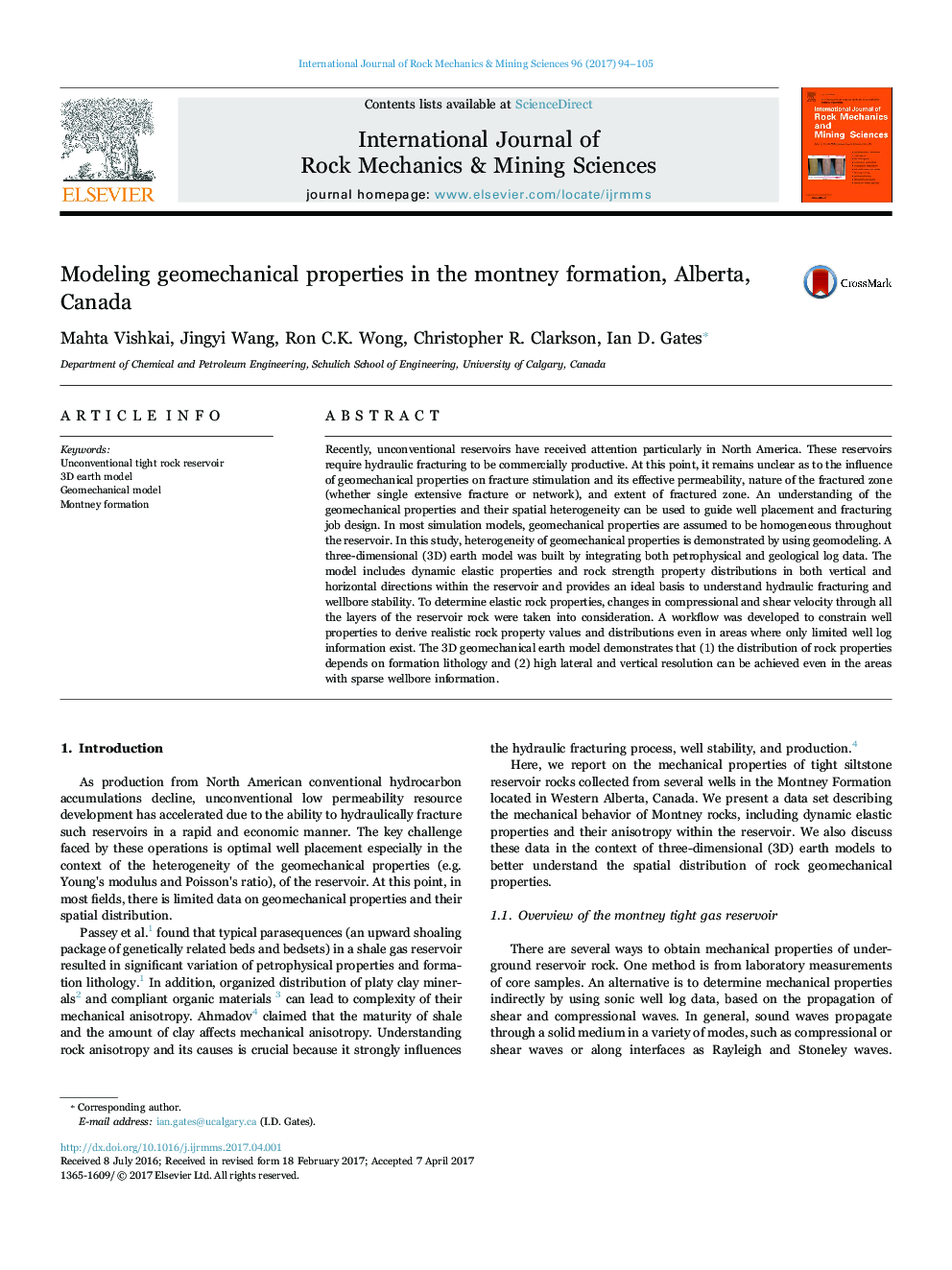| Article ID | Journal | Published Year | Pages | File Type |
|---|---|---|---|---|
| 5020224 | International Journal of Rock Mechanics and Mining Sciences | 2017 | 12 Pages |
Abstract
Recently, unconventional reservoirs have received attention particularly in North America. These reservoirs require hydraulic fracturing to be commercially productive. At this point, it remains unclear as to the influence of geomechanical properties on fracture stimulation and its effective permeability, nature of the fractured zone (whether single extensive fracture or network), and extent of fractured zone. An understanding of the geomechanical properties and their spatial heterogeneity can be used to guide well placement and fracturing job design. In most simulation models, geomechanical properties are assumed to be homogeneous throughout the reservoir. In this study, heterogeneity of geomechanical properties is demonstrated by using geomodeling. A three-dimensional (3D) earth model was built by integrating both petrophysical and geological log data. The model includes dynamic elastic properties and rock strength property distributions in both vertical and horizontal directions within the reservoir and provides an ideal basis to understand hydraulic fracturing and wellbore stability. To determine elastic rock properties, changes in compressional and shear velocity through all the layers of the reservoir rock were taken into consideration. A workflow was developed to constrain well properties to derive realistic rock property values and distributions even in areas where only limited well log information exist. The 3D geomechanical earth model demonstrates that (1) the distribution of rock properties depends on formation lithology and (2) high lateral and vertical resolution can be achieved even in the areas with sparse wellbore information.
Keywords
Related Topics
Physical Sciences and Engineering
Earth and Planetary Sciences
Geotechnical Engineering and Engineering Geology
Authors
Mahta Vishkai, Jingyi Wang, Ron C.K. Wong, Christopher R. Clarkson, Ian D. Gates,
